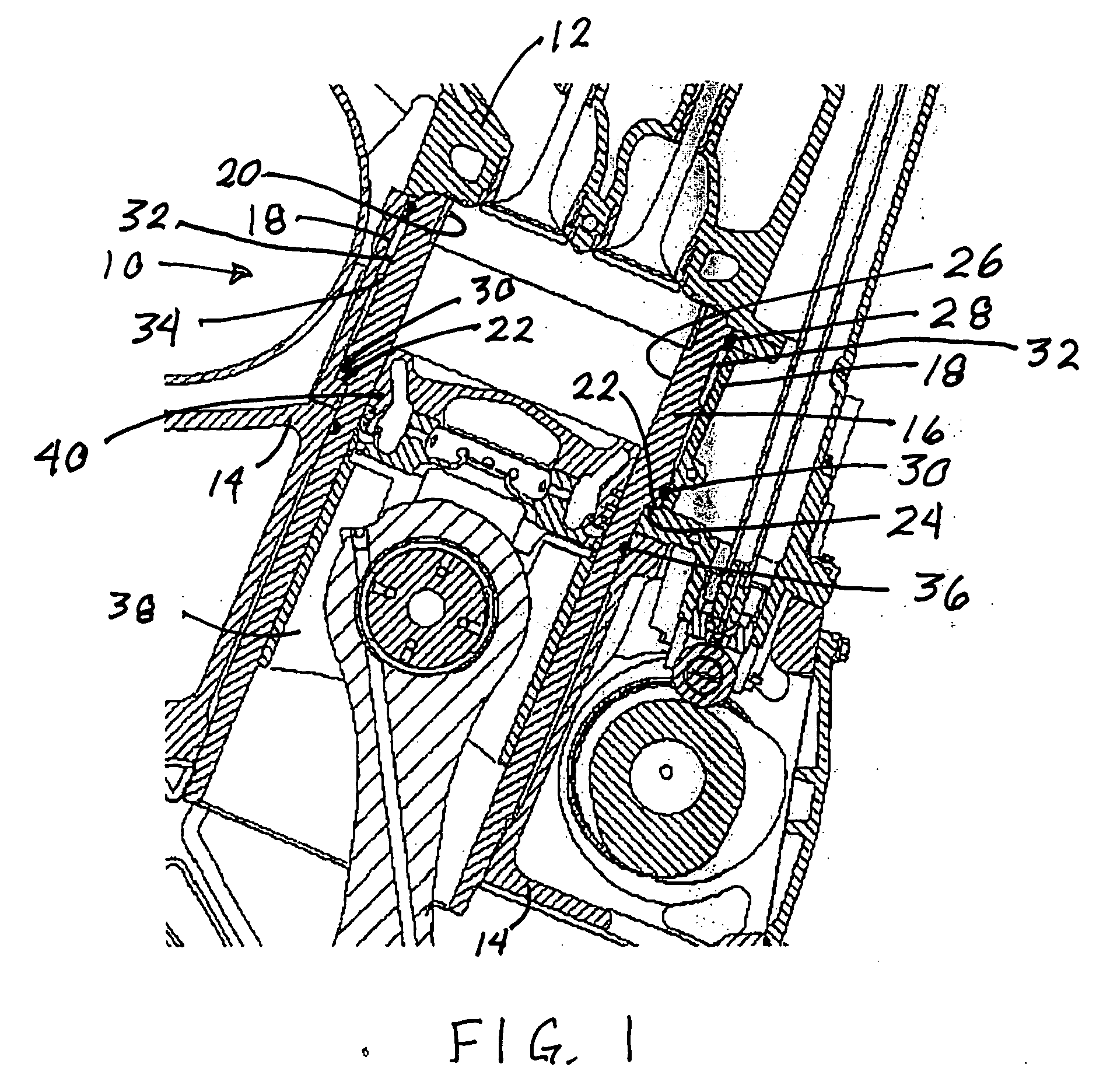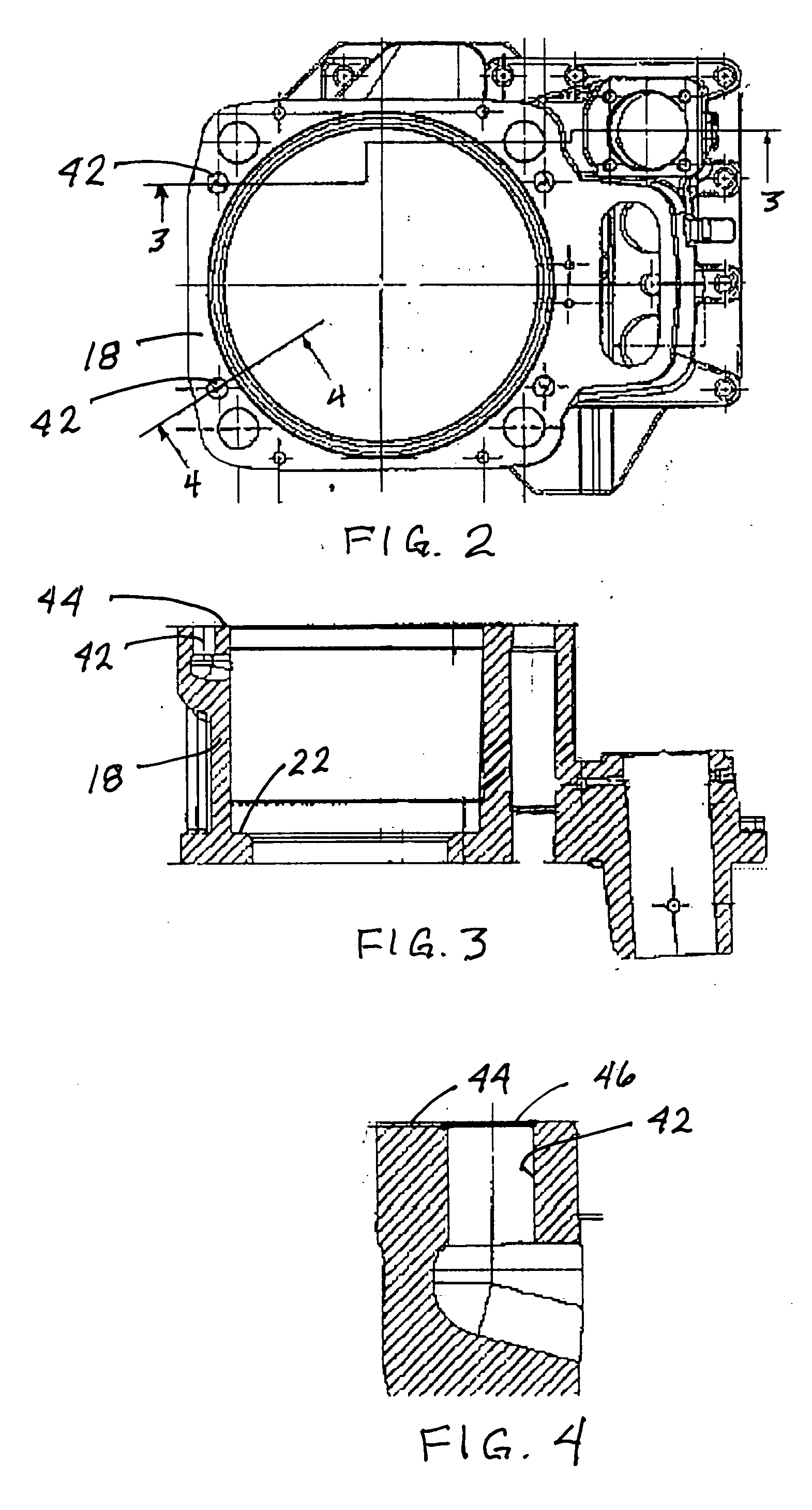Engine power assembly
a technology of power assembly and engine, which is applied in the direction of engine cooling apparatus, liquid cooling, cylinders, etc., can solve the problems of accelerating gasket wear, affecting the performance of the engine, so as to minimize the aforementioned wear of the cylinder liner
- Summary
- Abstract
- Description
- Claims
- Application Information
AI Technical Summary
Benefits of technology
Problems solved by technology
Method used
Image
Examples
Embodiment Construction
[0020] As shown in FIG. 1, a first embodiment of the apparatus 10 of the present invention includes a cylinder head 12, an engine frame 14, a cylinder liner 16, a strongback or water jacket 18, and a fire ring 20. An upwardly facing flange 22 can be provided on the internal surface of the water jacket 18, better seen in FIG. 3, and a downwardly facing shoulder 24 can be provided on the external surface of the cylinder liner 16. The shoulder 24 is designed to abut the flange 22, in order to support the cylinder liner 16 from the water jacket 18. The water jacket 18 is in turn supported by the engine frame 14. This avoids direct support of the cylinder liner 16 by the engine frame 14, thereby minimizing wear of the cylinder liner 16.
[0021] The fire ring 20 is provided at the joint between the cylinder liner 16 and the cylinder head 12, to protect the head gasket from damage by exposure to hot combustion gases. A piston 38 is shown at a lower position, for the sake of clarity. In oper...
PUM
 Login to View More
Login to View More Abstract
Description
Claims
Application Information
 Login to View More
Login to View More - R&D
- Intellectual Property
- Life Sciences
- Materials
- Tech Scout
- Unparalleled Data Quality
- Higher Quality Content
- 60% Fewer Hallucinations
Browse by: Latest US Patents, China's latest patents, Technical Efficacy Thesaurus, Application Domain, Technology Topic, Popular Technical Reports.
© 2025 PatSnap. All rights reserved.Legal|Privacy policy|Modern Slavery Act Transparency Statement|Sitemap|About US| Contact US: help@patsnap.com



